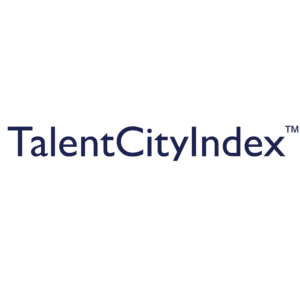Pre-conception #4: ‘Government & Talent Agenda: They shouldn’t, they couldn’t’
A 6 part article series by Nicole van Haelst
Access to talent has become the decisive factor in (re)location policies of companies. How a city or region manages the talent risks that their employers experience, strongly impacts their competitiveness. And so, the Human Capital Agenda has become an integral part of regional economic policy and transition strategies. Game on!
The number of Places addressing the agenda grows fast (good!) and seeing them activate the multiple players that are involved, often reminds me of bootcamp training. At first, it hurts a lot and ‘why am I doing this again?’ requires a firm answer. But, with positive results comes appreciation, more motivation and requests to join…
The scope of the Talent agenda is a topic of never ending discussion, so it seems. What I’ve heard a lot in this context is phrases like:
- ‘Internationals (expats!) and the local labour market are… Two totally different things’.
- ‘The Human Capital Agenda is all about the alignment of education and the labour market’
- ‘In closing the talent gap, the government should not intervene… It could not’.
Let’s have a closer look at these preconceptions because in cases I have been involved in, theses have proven to be misconceptions. And as such caused a lot of frustration and failure. Time wasted, competitive power lost and labour market challenges even bigger. Like sticking to the belief that ‘by doing a lot of squads and eating less, I will lose weight and become fitter faster.’ Unfortunately not always the case.
Goal setting for Winners
Whilst the wording may be different, most talent agendas share the mission to structurally close the talent gap.
Structurally: Short and long(er) term.
Talent gap: In numbers and quality, people and skills
Goal setting should include both aligning education with labour market needs and lifelong learning, activating un(der-)used labour potential and attracting and retaining international talent. Typically though, most labour market programs still focus on the national perspective, and one topic only. Such as demand for skills by the employers or supply of talent from education, or up- and reskilling senior professionals etc. And that, unfortunately, will not make you a winner.
The catch is – you need to address all of the above, at the same time. Dedication & discipline: ‘All day, everyday’. The mission simply cannot be accomplished with one chapter missing because they are codependent. Todays’ vacancies for software engineers eg. cannot be filled by Dutch candidates only just because they aren’t there, yet. Adopting educational programs, up- and reskilling people, it all takes time to deliver. Time we don’t have. And it’s not only a question of time, there’s also the quality question many of us don’t want to see.
Besides a numbers’ game, the ‘local market’ may lack certain expertise. Moreover, diverse teams with multiple disciplines, nationalities, cultures, sexes and political orientations have proven to be more creative, perform better and to be indispensable for the transitions we face today. Adding internationals has become a mere prerequisite for innovation. And these qualitative aspects are just part of the equation. The story of total added value of attracting & retaining internationals for the local economy must include: taxes, consumption and indirect employment for locals.
Intervention Inhibited?
The Talent Agenda is too important to be coordinated by the small, dispersed group of people I see assigned to it today. In comparison to other economic functions, the budget, people and other means assigned to this topic are still a fraction, very minimal. ‘The market will have to leverage supply and demand, the government cannot intervene’ has been a popular answer to requests for more resources. However, this response is not matching the Herculean task. Fact is that successful Places have done very differently in this regard.
Reality shows that ‘the market’ – employers, recruiters, education, other labour market related service providers – cannot do it alone. The urgency of the required transitions require public intervention. The capabilities (local) government should and could bring to practise: labour market intelligence, activating public parties and other partners in the HCA ecosystem, instigating the holistic approach to the HCA, aligning education and the labour market and stimulating cross-sectoral, cross-discipline, cross-departmental, cross-corporate landscape cooperation. Amongst others.
Co-creating Place Leadership
For many public organisations, this role is (partially) new, the steps taken are considered with a lot of scrutiny by ‘the market’ and some guidance is appreciated. The bootcamp trainer is called upon for professional obstacle training to ensure goals are met, to make the difference: she stops us do the same things and expect other results. The stakes are high: how to become the No. 1 Place Leader, a champion in managing a complex program called the Talent Agenda.
Advice is to adopt a data-driven and truly talent central approach. There is a tendency to go off and start interviewing employers to gauge the skills gap but often – for various and understandable reasons – this doesn’t provide enough of the right input for a sturdy strategy. What I’ve come to appreciate is to invest in labour market intelligence first (more on that in the third part of the series). It will provide all ingredients for the roadmap to a responsive labour market, to collaborative talent attraction including the role definition for government, education and employers. A public Talent Agency is the perfect candidate to take ownership in this process.
As regards of the implementation of projects: go beyond research. Experiment, do, act! Apply the lean method and learn from experiments. Performance data will give direction to the logical next steps. It will give you intermediate awards during this obstacle race because that’s what instigating A Human Capital Agenda is all about: a long lasting commitment to the end result.
We tend to include other national examples if and when we do benchmarks. However, I have seen real magic happen in co-creation bootcamps with peers from other cities and regions. The broader, international perspective provides more cases, more similar to yours. Creating a culture of curiosity will open a bluebook of proven practices and probably – even more worthwhile – a network of peers in the field of labour market analytics, place making and talent attraction. Your very own bootcamp mates!
Read part 1 of the series here: ‘Talent = Student or Top Performer’
Read part 2 of the series here: ‘Employers are the demand side’
Read part 3 of the series here: ‘We know best why we are an attractive place’
Read part 4 of the series here: ‘Government & Talent Agenda: They shouldn’t, they couldn’t’
Read part 5 of the series here: ‘Hires is all that counts’
Read part 6 of the series here: ‘Place is less relevant’








